Encompassing shifting sand deserts, lush grasslands, breathtaking lakes, snow-capped mountains, verdant forests, lively cities, historical relics, religious sites, natural wonders, and a cultural mix of ethnic minorities all in one province, Xinjiang is China’s best kept travel destination secret.
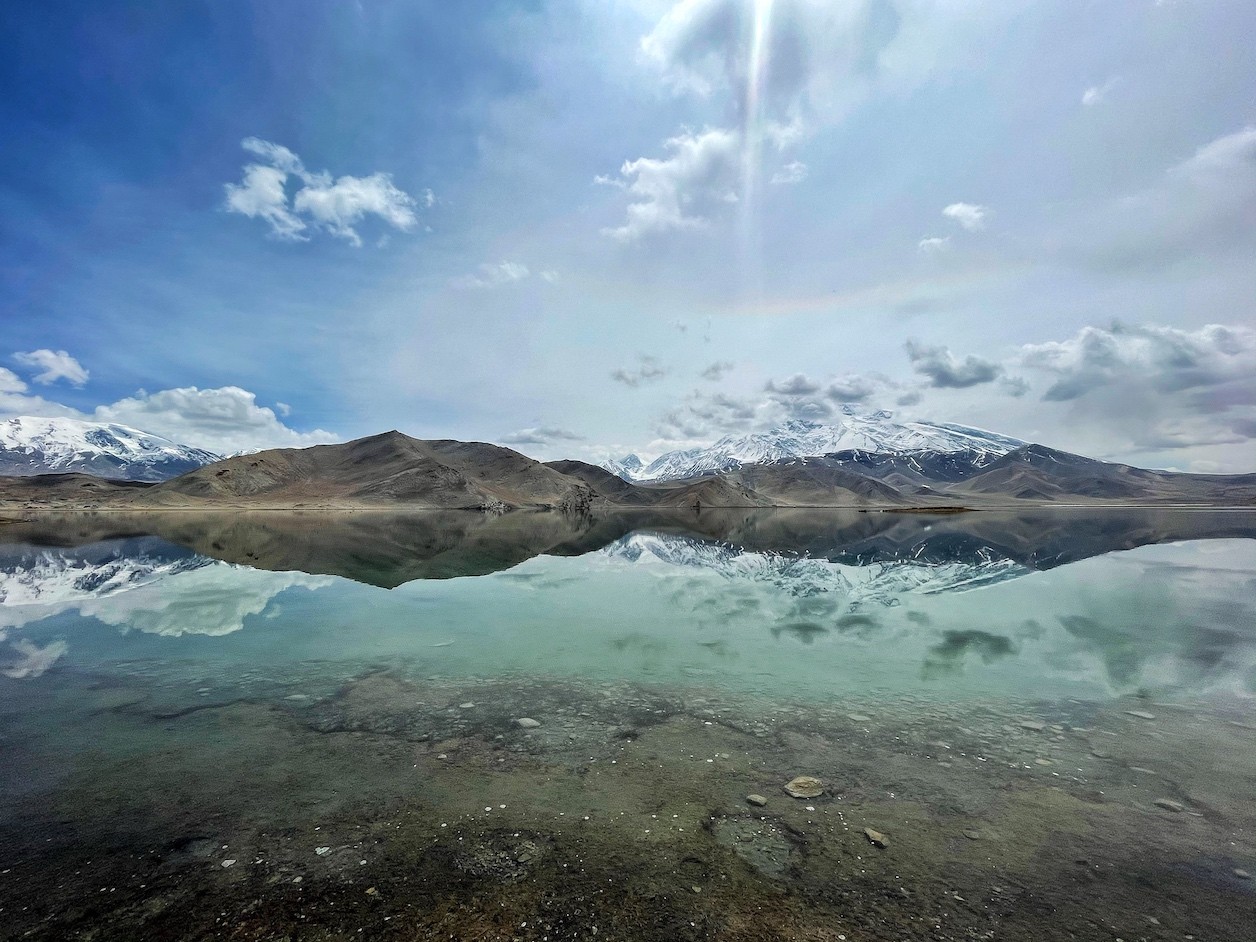
Image by Sophie Steiner/That's
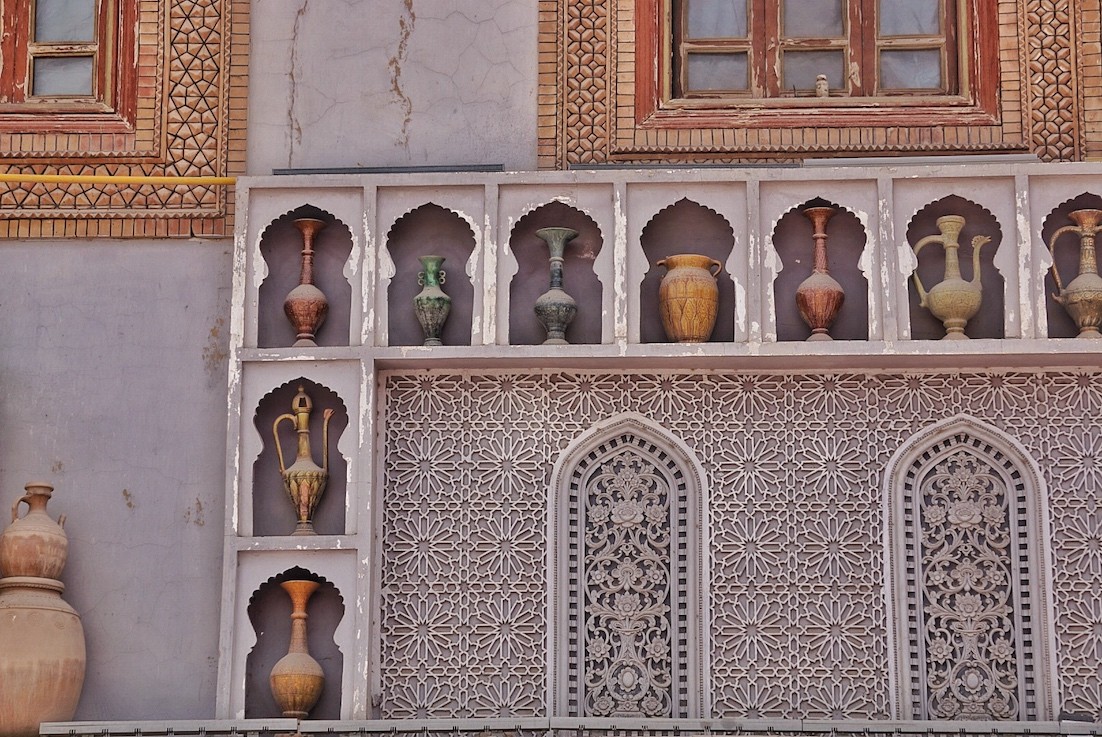
Image by Sophie Steiner/That's

Image by Sophie Steiner/That's
As China’s largest administrative division, the land-locked Xinjiang Uyghur Autonomous Region spans 1.66 million square kilometers, covering an altitude from 157 meters below sea level in the Turpan Depression – the third lowest place on Earth – to 8,611 meters above sea level at K2 – the second highest peak in the world.

Image by Sophie Steiner/That's
Summer sees boiling, dry heatwaves, while winter plummets into Arctic-level freezes, but spring and autumn allow visitors to enjoy the best of both worlds, along with an abundant harvest of seasonal fruits and nuts, like Turpan grapes, Korla pears, Kucha apricots, Yecheng pomegranates, Atushi figs, Hotan walnuts and Hami melons.
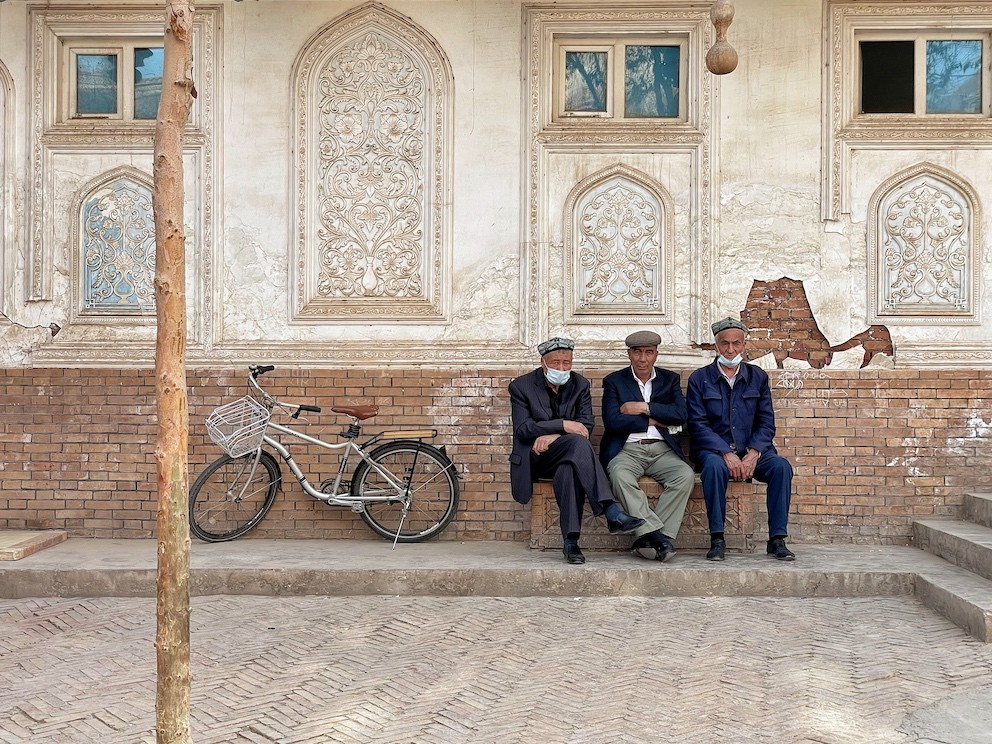
Image by Sophie Steiner/That's
As vast as it’s climate, altitude and landscape span, Xinjiang’s population is equally diverse – a rich Silk Road-influenced history culminating in a cultural melting pot of Uyghurs, Tajiks, Mongols, Kazakhs, Kyrgyz, Han Chinese and many more.

Image by Sophie Steiner/That's
Still relatively new to the tourist scene, Xinjiang provides travelers with bona fide experiences, meaningful encounters and authentic interactions with the people, culture, cuisine and history of this extraordinary region of China.
Kashgar Old Town
On the far western side of Xinjiang sits Kashgar, a once crucial trading point along the Silk Road between China, the Middle East and Europe. At the center of the now modern city is Kashgar’s Old Town, a replica of what once existed that still maintains its cultural significance.
Hustling food vendors dot the twisting alleyways, calling out their daily specials between handicraft stalls packed with local products – like embroidered silk scarves, Hotan carved jade, pounded copper tableware and dried fruits and nuts – all spilling out onto the street.

Image by Sophie Steiner/That's

Image by Sophie Steiner/That's
Weekend mornings see hordes of people congregating at the Kashgar Sunday Bazaar, a bustling livestock trading point, filled with food hawkers and street vendors on the outskirts. Only interested in the street snacks? There’s a night market filled with all the local delicacies every evening along Ou-er Daxike Lu, directly across from the Id Kah Mosque – the largest of its kind in Xinjiang.
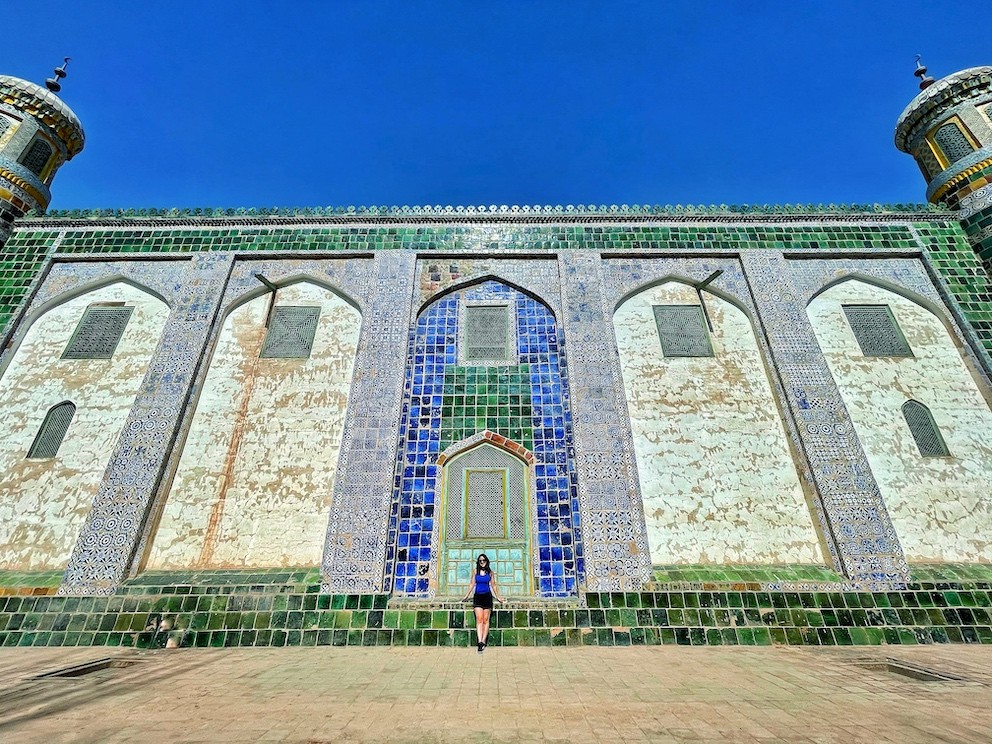
Image by Sophie Steiner/That's
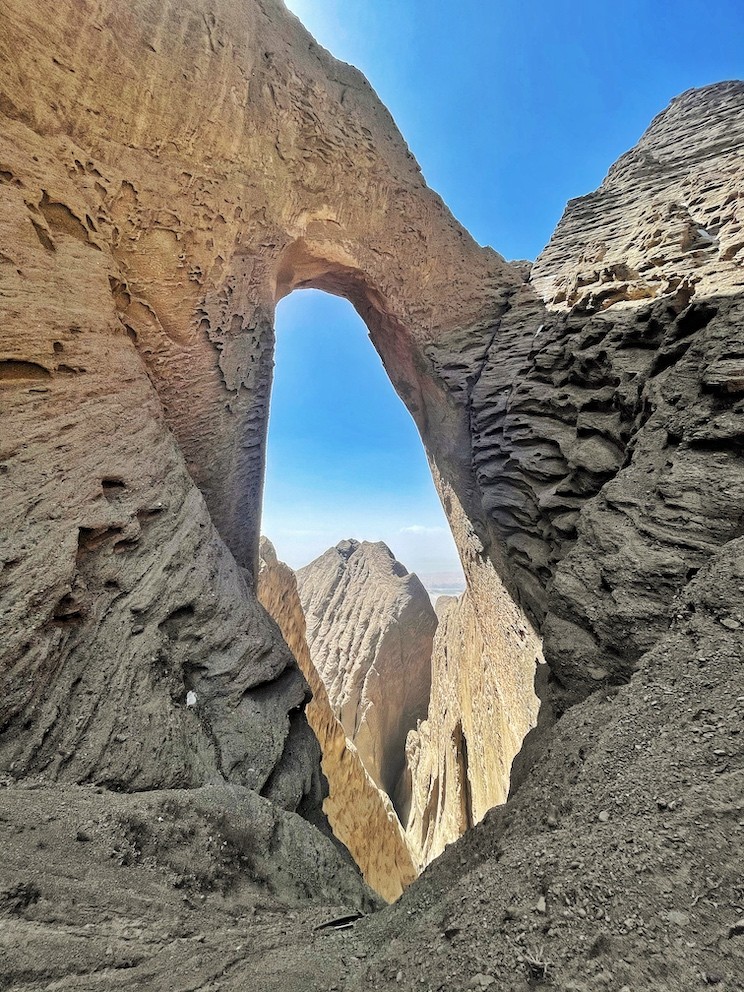
Image by Sophie Steiner/That's
Don’t miss the Afaq Khoja Mausoleum, a masterpiece of Uyghur traditional architecture just a few kilometers away from the Old Town, or a hiking trip out to Shipton’s Arch – the highest rock arch in the world – less than two hours outside of Kashgar.
Karakoram Highway
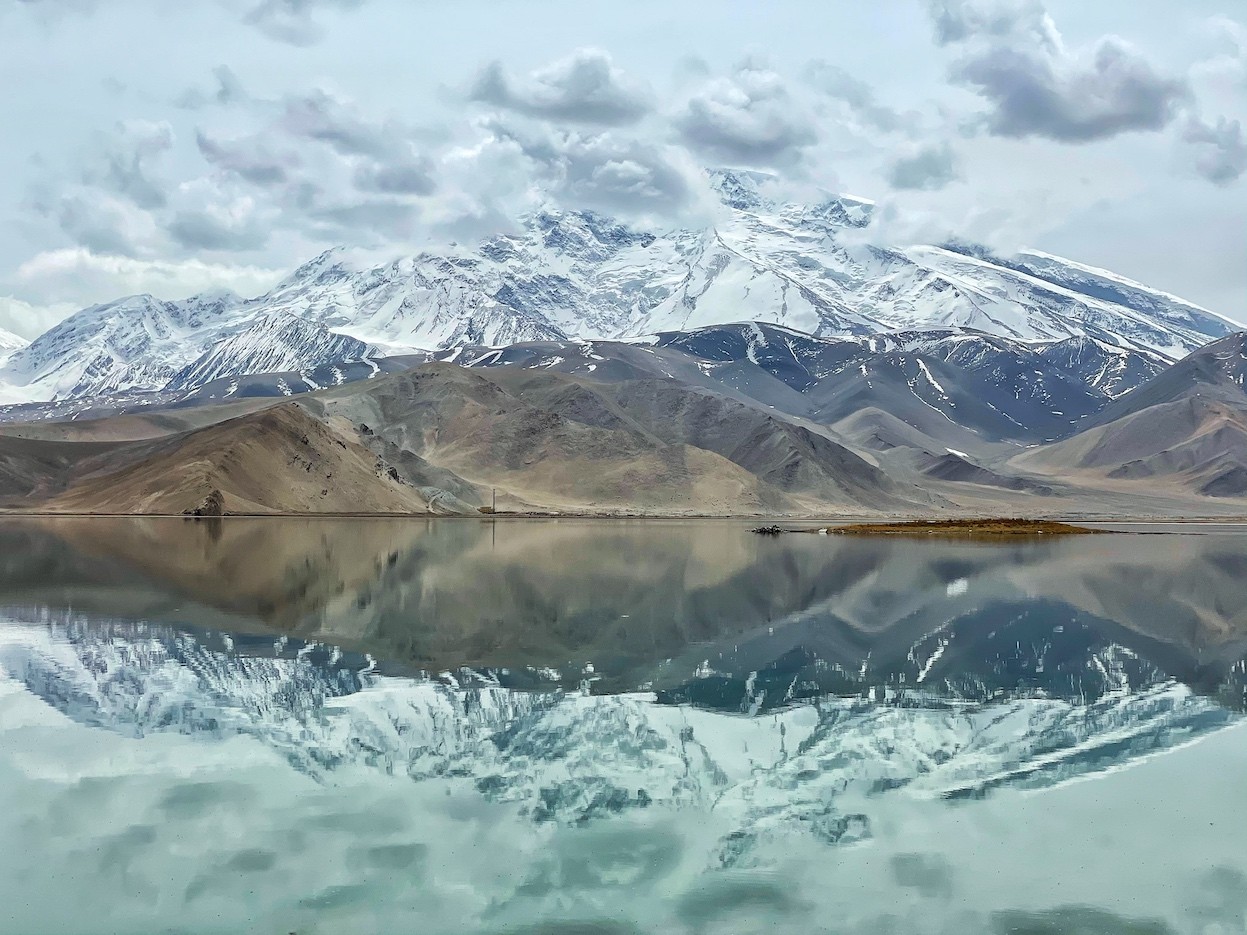
Image by Sophie Steiner/That's
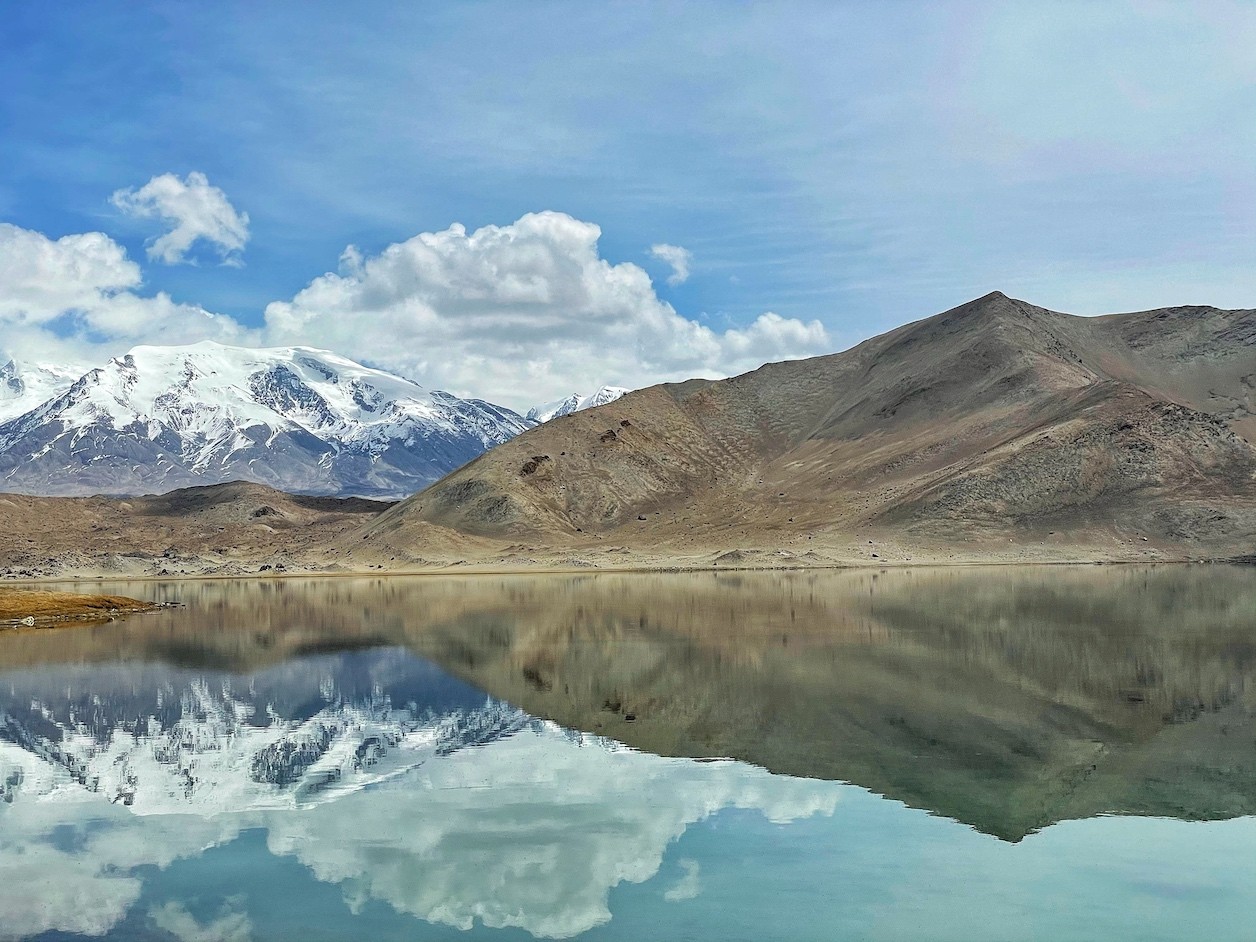
Image by Sophie Steiner/That's
The heavenly Karakoram road originates in Kashgar, crosses the Pamir and Karakoram mountains and continues onwards through the Himalaya and Hindu Kush mountain ranges – the highest on the planet – before descending into the Indus River valley in Pakistan.

Image by Sophie Steiner/That's
After passing through the Ghez River Canyon, stop at the Baisha Lake – surrounded by powdery sand dunes – followed by a visit to the stunning Karakul Lake, with its pristine backdrop reflecting the ginormous Muztag Ata mountain behind it.
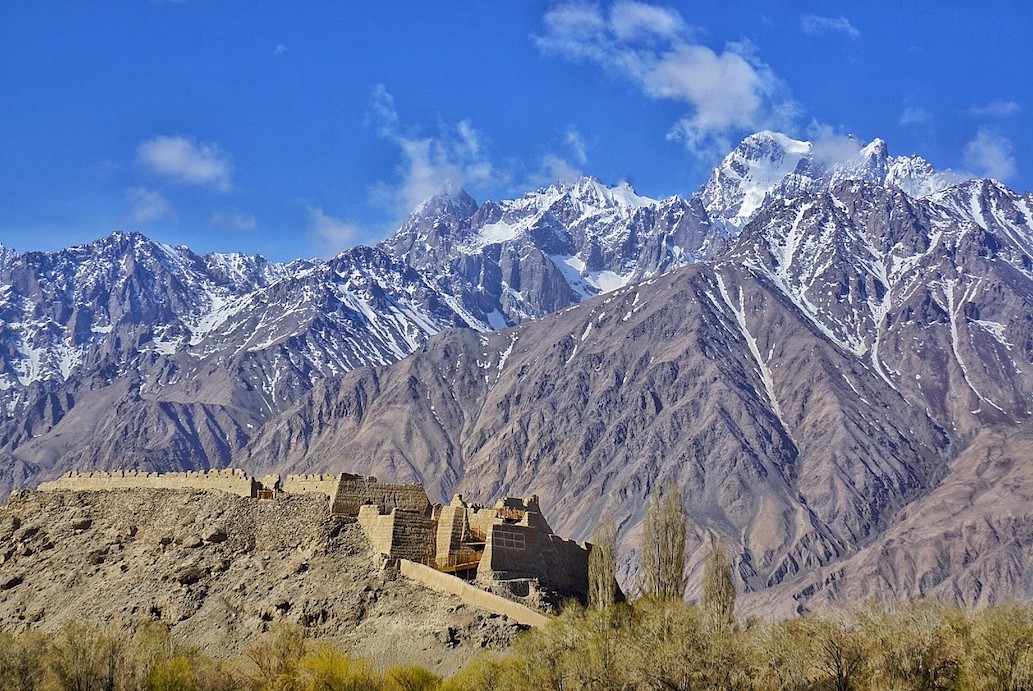
Image by Sophie Steiner/That's
Known as the most beautiful drive with the highest border crossing on Earth, China travelers can finish this scenic journey at Taxkorgan, the final town before the border crossing. The nearby Stone City Ruins – with its 2,000-year-old history – coupled with the sprawling Golden Grasslands, make this primarily Tajik-influenced village a worthwhile visit.
Urumqi

Image by Sophie Steiner/That's
Xinjiang’s capital city is home to 3.5 million people, modern skyscrapers and a contemporary lifestyle, yet it’s one of the most remote cities on the planet and farthest from an ocean than any other city in the world. Although it lacks an ancient history and an old town per se, it is a major jumping off point for seeing northeast and southeast Xinjiang, plus a foodie haven for regional favorites.
Turpan
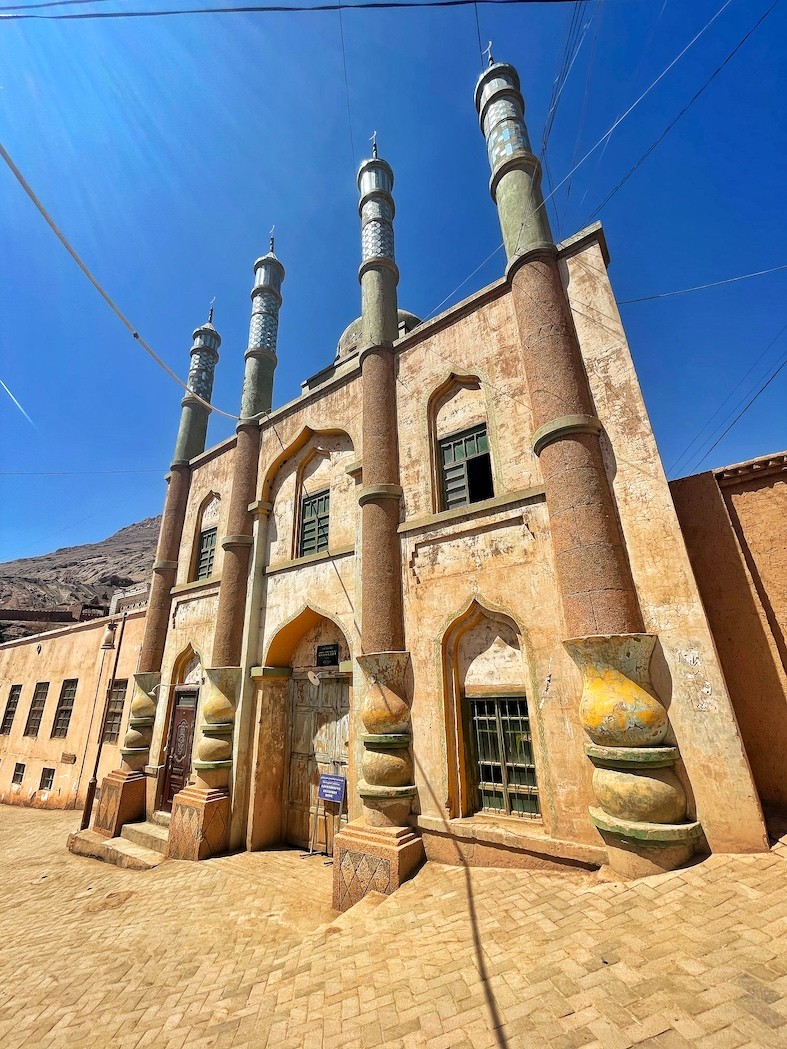
Image by Sophie Steiner/That's
Referred to as The City of Grapes, Turpan is one of Xinjiang’s jewels, famous for its Uyghur culture, unique geographical location and historical value.
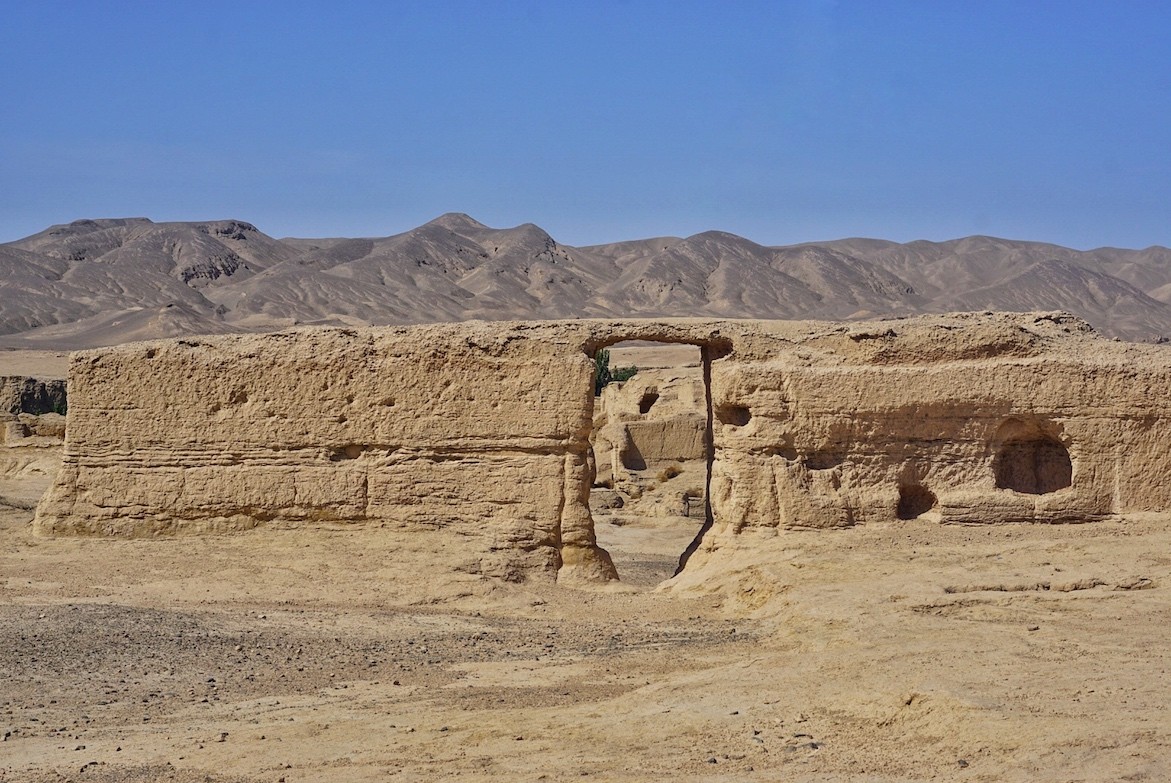
Image by Sophie Steiner/That's
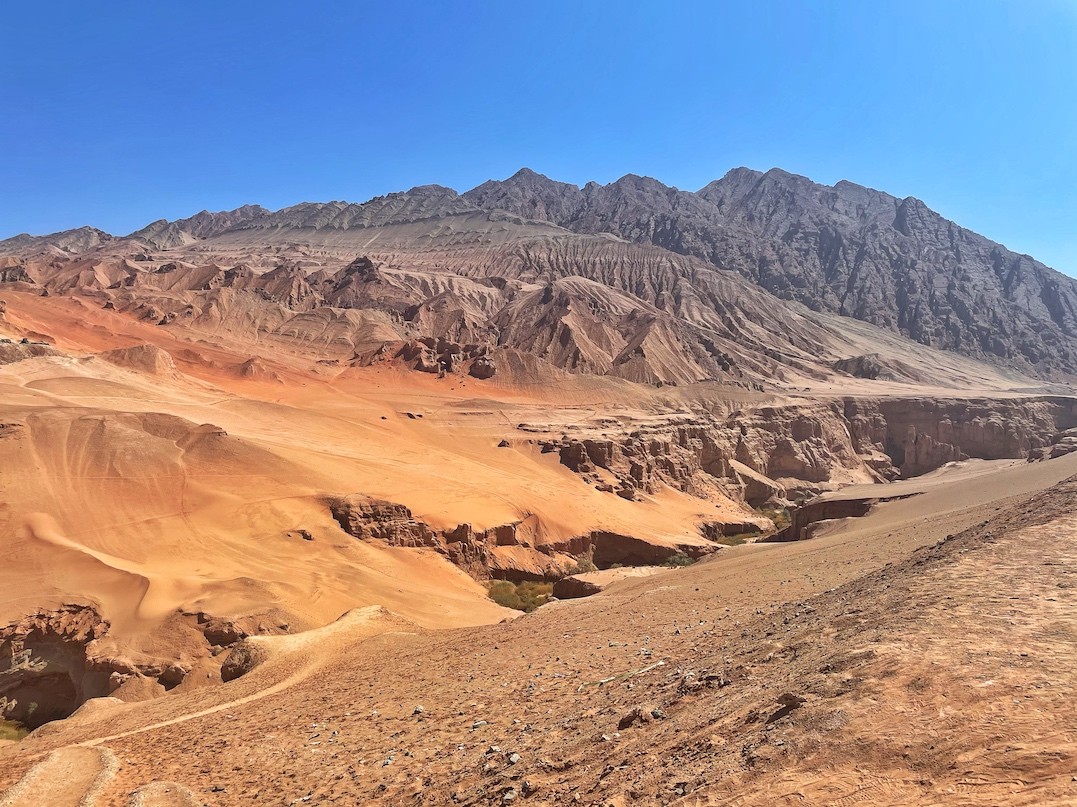
Image by Sophie Steiner/That's
From the majestic Yarkhoto (Jiaohe) Ancient City Ruins – the oldest, best preserved earthen architectural site in the world, dating back to the second century BC – to the looming, crimson Flaming Mountains that appear to be on fire in the midday heat, Turpan is a true desert town.
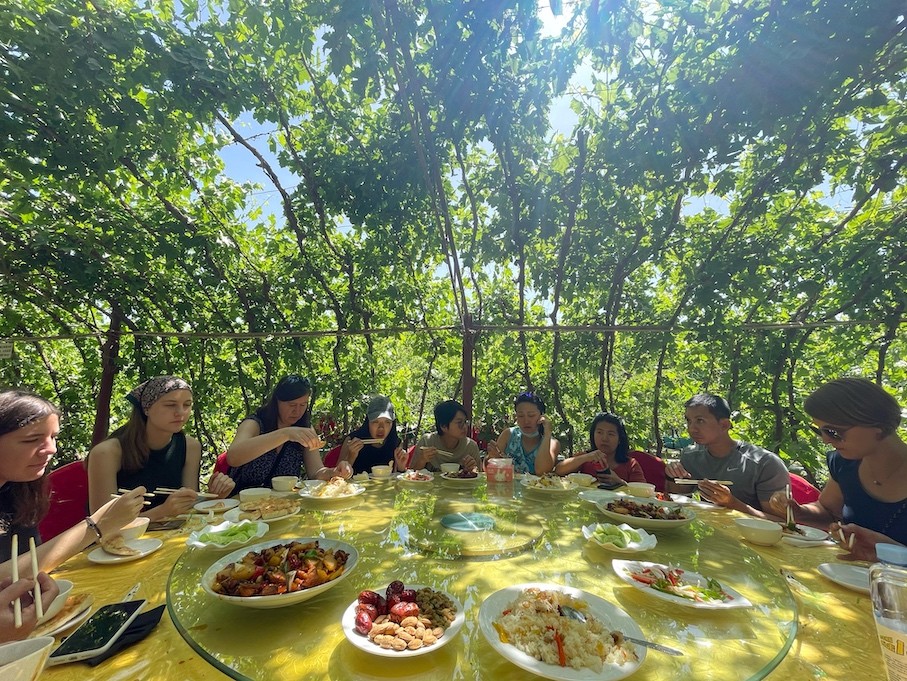
Image by Sophie Steiner/That's
Find respite from the heat in any of the sprawling grape vineyards that surround the city, the ideal place for a local lunch, or at Emin Minaret, an 18th century mosque converted into a photographer’s playground.
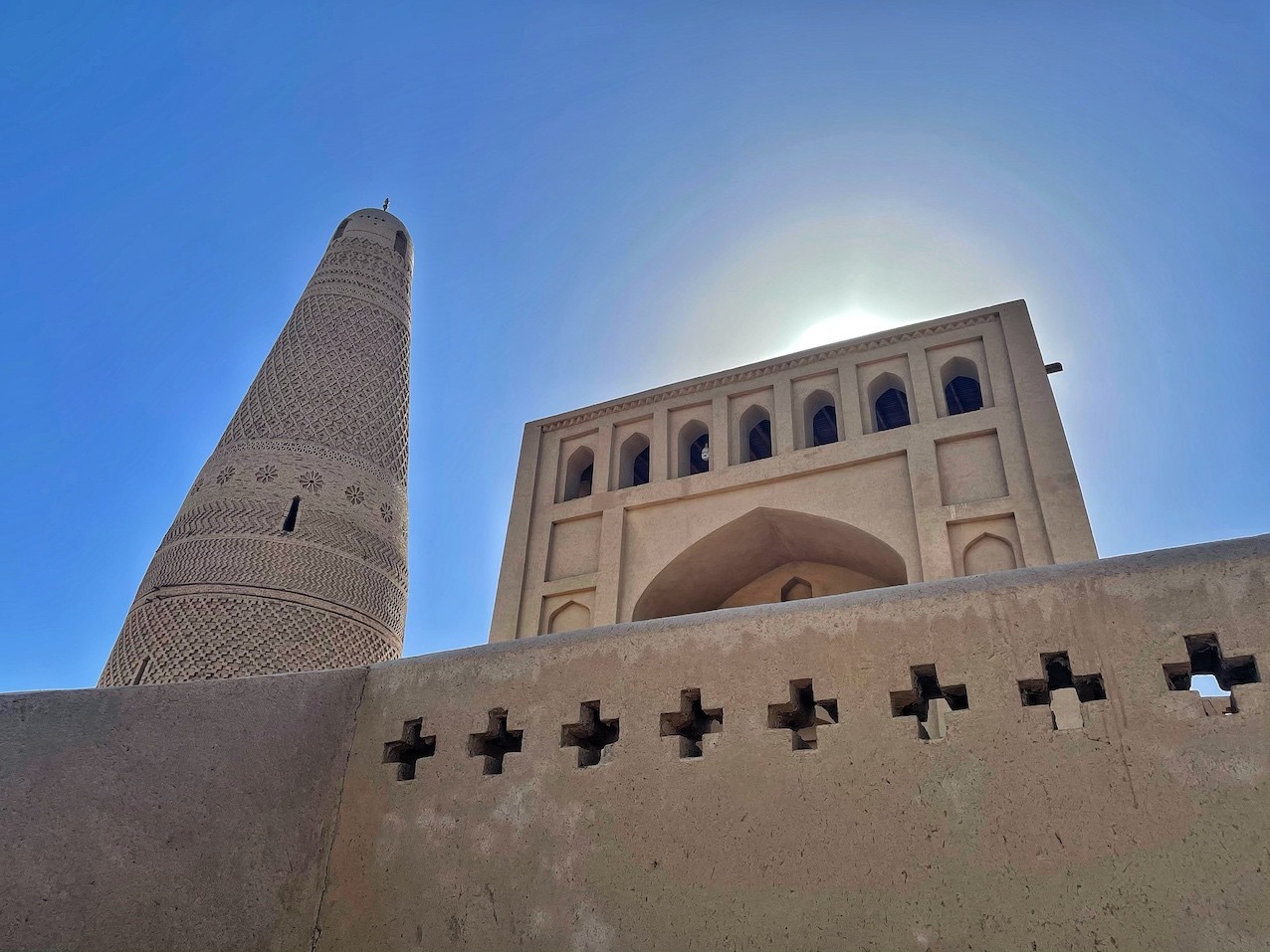
Image by Sophie Steiner/That's
Heavenly Lake in the Tianshan Mountain Range
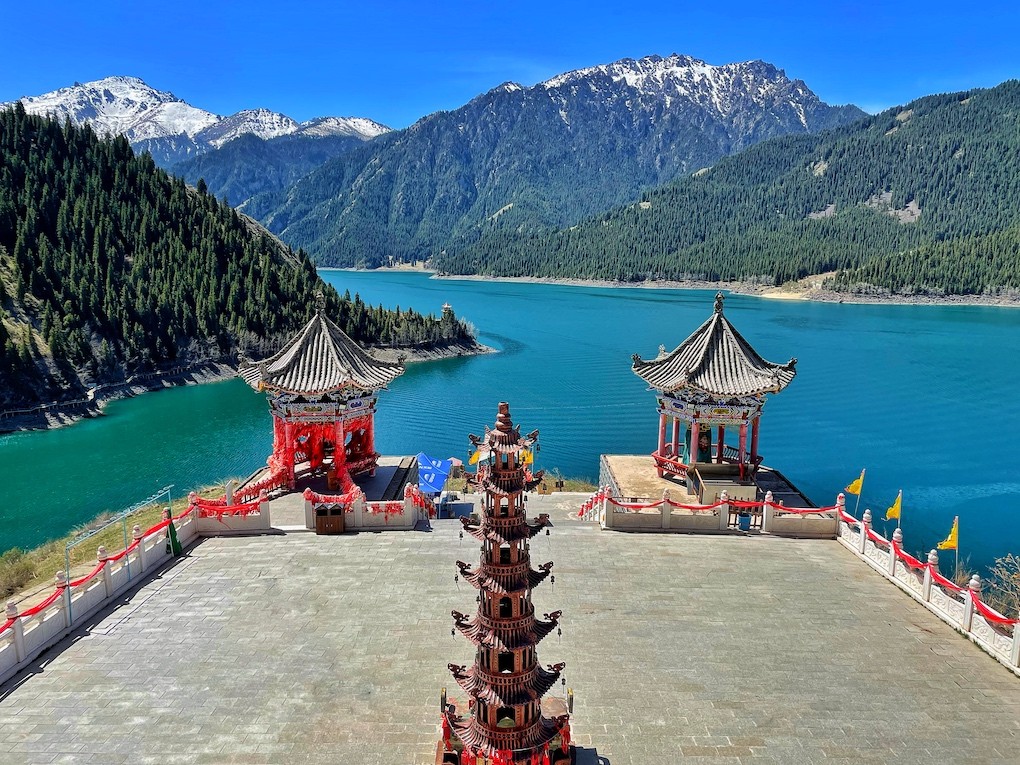
Image by Sophie Steiner/That's
The Tianshan Mountains stretch from Uzbekistan into Xinjiang, with Bogda Shan, one of the easternmost sub-ranges, being particularly impressive. With fantastic glacial peaks rising over deep alpine valleys, Tian Chi, or Heavenly Lake, is a national park blanketed in grasslands, forests and glistening waters. Hike around the park for a visit to a monastery built into a mountain, a dribbling waterfall and panoramic views across this mountainous paradise.
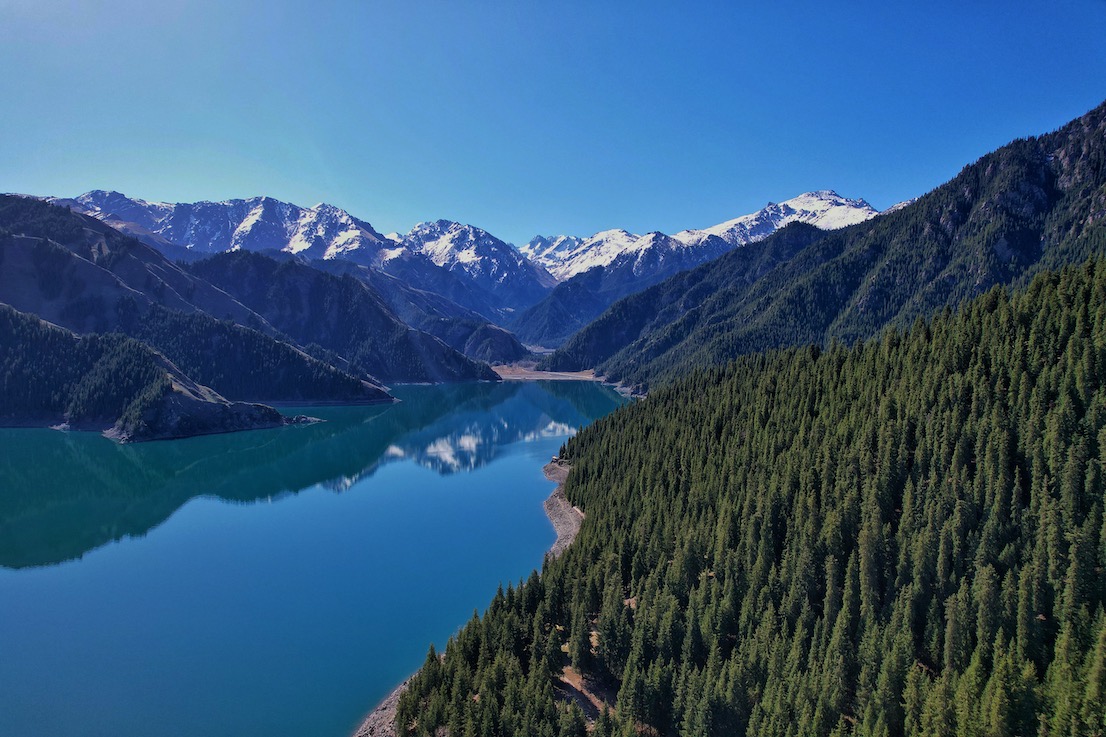
Image by Sophie Steiner/That's
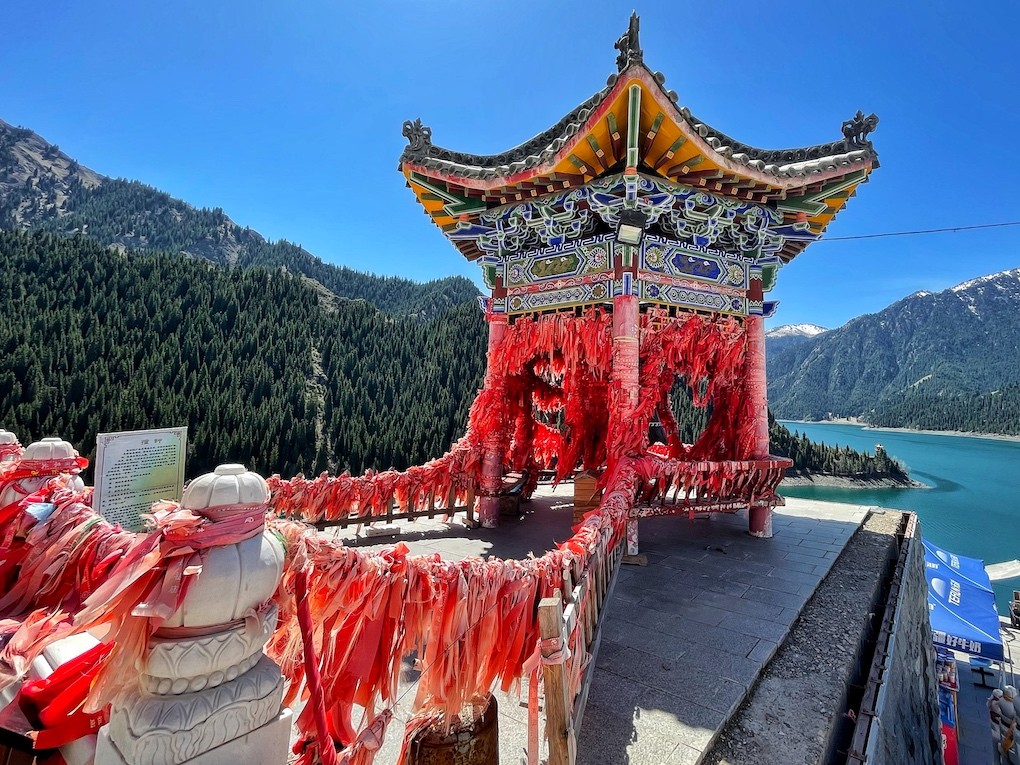
Image by Sophie Steiner/That's
If it’s more stunning lake views you’re after, the Kanas Lake – located in the valley of the Altai Mountains, is a picturesque body of water bordering Russia, Kazakhstan and Mongolia.
Big Plate Chicken | Da Pan Ji | 大盘鸡
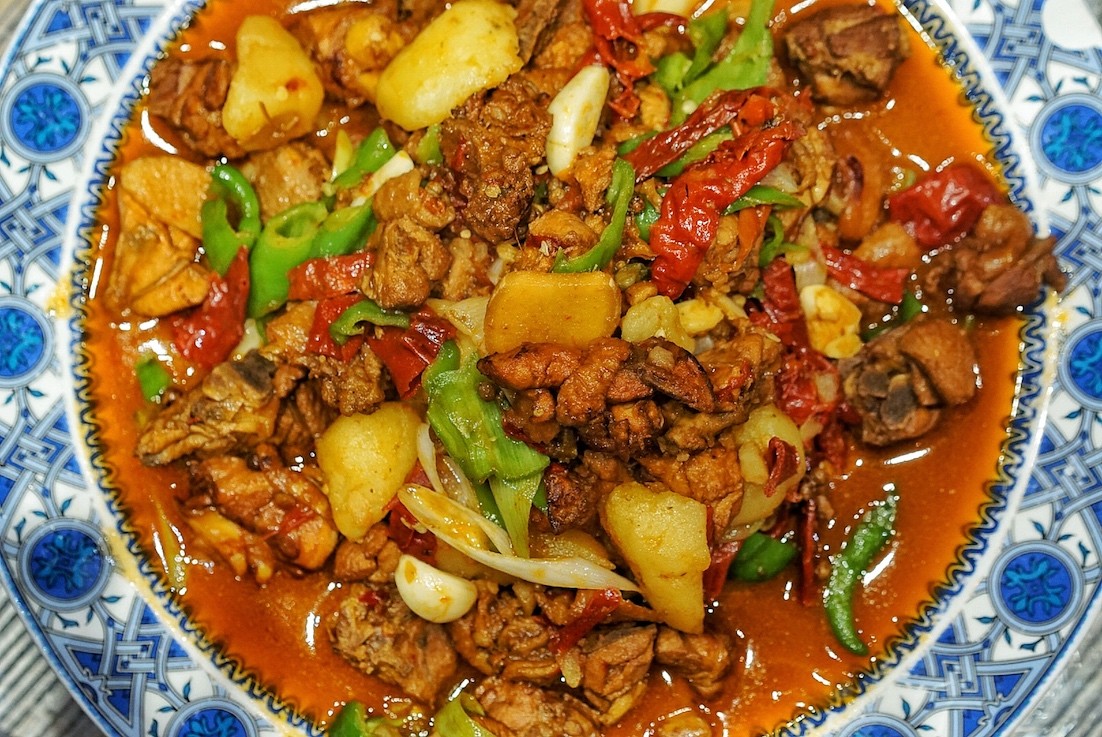
Image by Sophie Steiner/That's
A heaping portion of slowly braised chicken stew, Big Plate Chicken is a platter made for sharing comprised of chicken, bell peppers and potatoes cooked with onions, garlic, ginger, chilies and a variety of spices – ranging from cumin and star anise to ground Sichuan peppercorns. The dish is customarily served with laghman, or wide, hand-pulled noodles that soak up the leftover spiced broth, allowing consumers to savor every last drop.
Xinjiang Pulled Noodles | Ban Mian/Laghman | 拌面

Image by Sophie Steiner/That's
A common Uyghur dish, handmade, ropey noodles – made simply from flour, water and salt – are rolled, stretched and pulled before boiling until al dente. Commonly topped with stir-fried lamb, bell peppers, chilies, onions and tomatoes, all simmered together in a meat stock, a bowl of this everyday pasta goes for RMB10-20 around the entire region.
Each restaurant has their own secret recipe, sometimes adding in seasonal vegetables like cabbage or green beans, but the building blocks are always the same – chewy, unctuous noodles interlaced with stewed seasonal vegetables for a resulting dish that’s excellence applauds and transcends its humble ingredients.
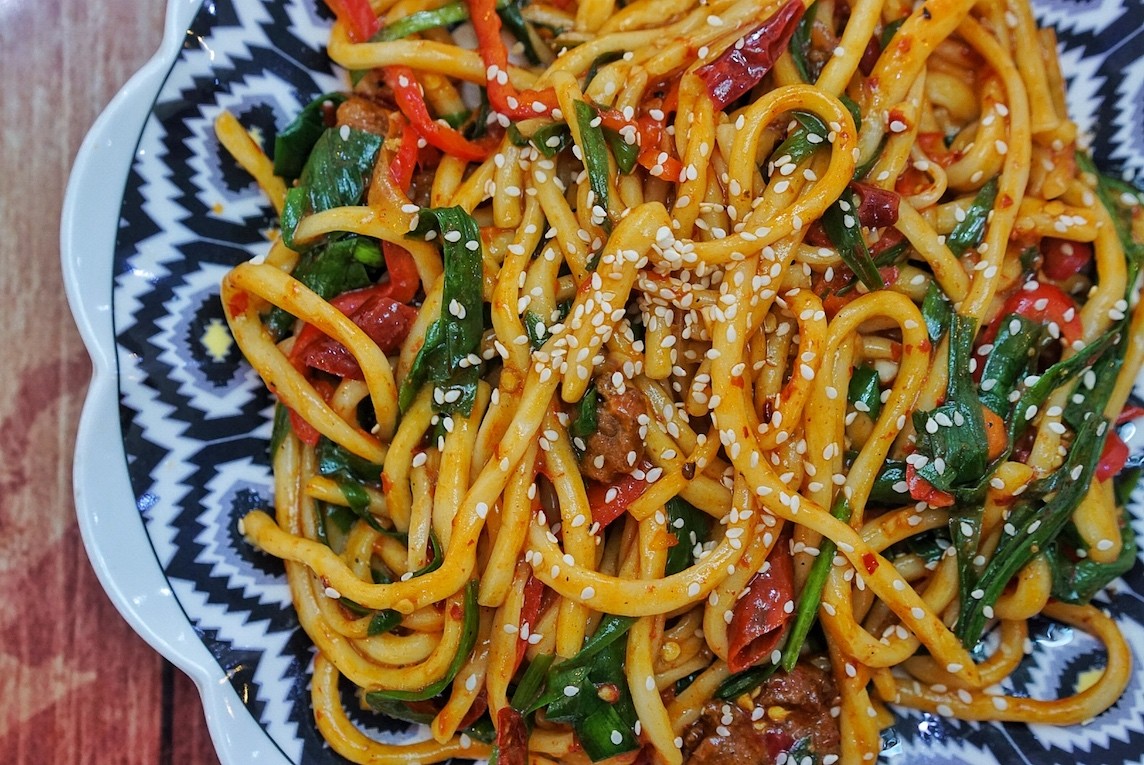
Image by Sophie Steiner/That's
Another equally unforgettable alternative is Gan Bian Chao Mian (干煸炒面), with thick cords of noodles stir-fried in oil and spices, along with spicy dried chilis, onions, garlic, spinach and a sprinkling of white sesame seeds.
Rice Pilaf | Zhua Fan/Polo | 抓饭
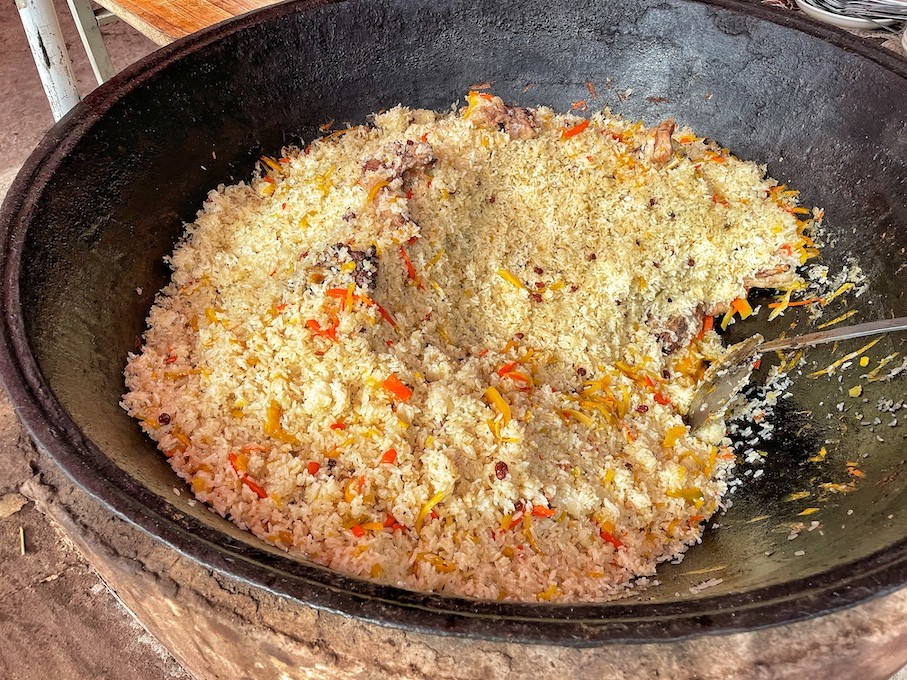
Image by Sophie Steiner/That's
It’s impossible to visit Xinjiang without relishing in a steaming plate of local rice pilaf. Enormous vats holding hundreds of portions are filled to the brim with fat-glistening rice, chunks of caramelized sweet carrots and slowly braised lamb meat.
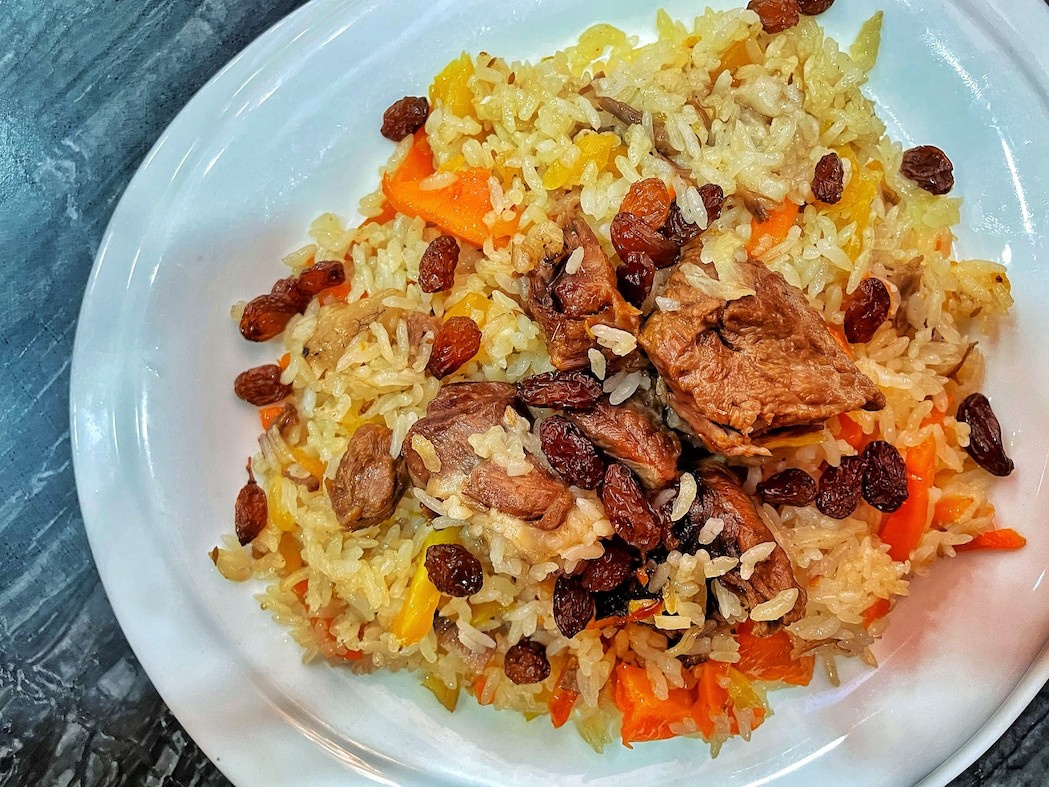
Image by Sophie Steiner/That's
Many venues top the dish with pickled carrot shreds, raisins, apricots or nuts for added texture, flavor and seasoning. Grab yourself some additional grilled lamb skewers (chuar) and tandoori-oven roasted Uyghur naan bread for the most authentic Xinjiang street side meal around.

Image by Sophie Steiner/That's
How to Visit
Flying into major cities like Kashgar and Urumuqi is relatively straightforward. However, getting around to the irreplaceable natural vistas is best done with a tour guide to avoid any unnecessary stress at security checkpoints. We traveled around Xinjiang with Wanna Travel, a Shanghai-based tour agency that offers both seven and 12-day trip options in the region, along with numerous other trips around China. To book your Xinjiang adventure with Wanna Travel, follow their Official WeChat account by scanning the QR code below:

[Cover image by Sophie Steiner/That's]




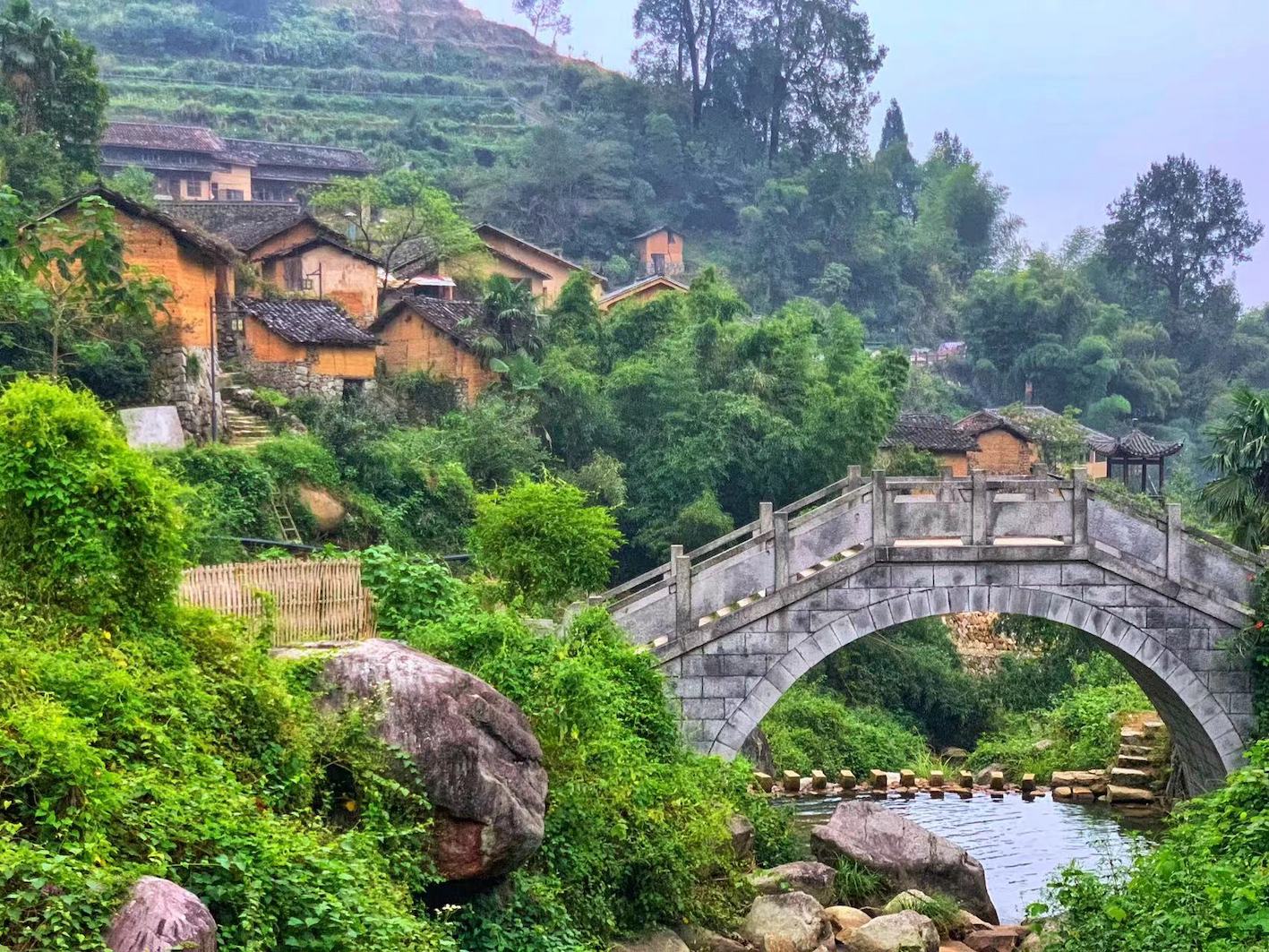
















0 User Comments